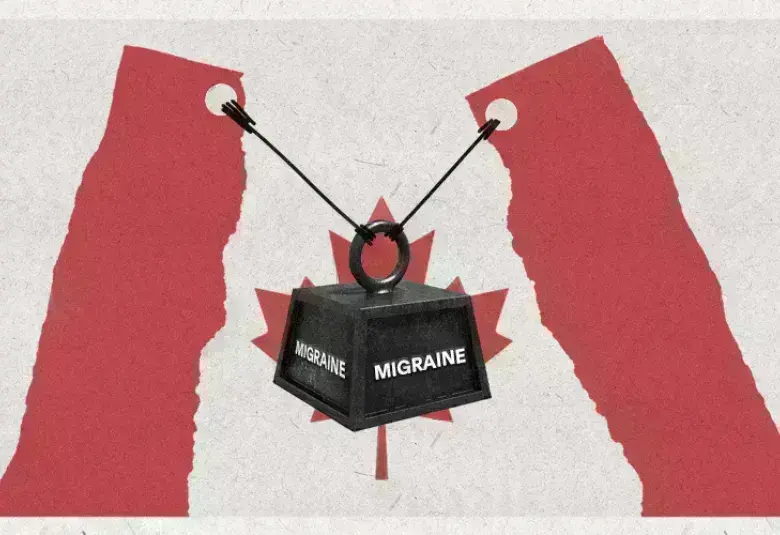The inaugural Canadian Headache Society conference got off to a flying start! During the first plenary session, Drs. Paul Cooper, Alex Melinyshyn, Elizabeth Leroux, and Ioana Medrea gave insightful talks on the pathophysiology and epidemiology of migraine, the narrative approach in headache diagnosis, and the acute and preventive treatment of migraine. These presentations set the tone for the remainder of the first edition of the Canadian Headache Society (CHS) conference.
Dr. Paul Cooper, MD, FRCPC, Professor of Neurology at Western University, started the first plenary session by presenting a topic that’s been a subject of much debate over the past decades: the location of the generation of pain in migraine. While pain is generated in the periphery for migraine,1 migraine attacks are initiated centrally, most precisely in the hypothalamus.2 Prodromal symptoms, such as yawning and fatigue,3-4 as well as changes in appetite and nausea,5 involve the dopaminergic system, which implicates the hypothalamus among other brain regions. Moreover, the hypothalamus is known to be involved with the circadian rhythm of migraine attacks6 and their association with hormonal status and menstrual cycle,7 which points towards this brain region as the location of the trigger of attacks.
While pain is generated in the periphery for migraine,1 migraine attacks are initiated centrally, most precisely in the hypothalamus2
During his presentation on the narrative approach in headache diagnosis, Dr. Alexander Melinyshyn, MD, FRCPC, a neurologist with a private practice in London, Ontario, Canada, mentioned the importance of easy-to-understand measures for patients to measure the severity of their migraine attacks, such as the traffic light system.8 With this system, developed by Dr. Ana Marissa Lagman-Bartolome, MD, FRCPC, Associate Professor of Pediatrics and Clinical Neurological Sciences at Western University, and Dr. Christine Lay, MD, FRCPC, Full Professor in Neurology at the University of Toronto, patients categorize their migraine attacks as green (mild or ‘’I can still go’’ headache), yellow (moderate or ‘’I have to slow down’’ headache), or red (severe or ‘’I have to stop’’ headache).
This approach helps patients to better measure the severity of their migraine attacks compared to a 0-10 scale
According to Dr. Leroux, MD, FRCPC, Faculty Lecturer at the McGill Neurology Department, multiple basic principles are important for the acute treatment of a migraine attack. Among them, the early timing of acute treatment is crucial, but it may become challenging as patients age.9 This is because the frequency of nocturnal attacks increases with age, and this may limit the potential for early intake. Another principle, recommended by the Canadian Headache Society guidelines for acute treatment,10 is the combination of acute treatments if the intake of single acute medications is not effective.
Other basic principles of optimal acute management include patient education and behavioral interventions
During the final segment of this first plenary session, Dr. Ioana Medrea, MD, Clinician Investigator at the Women’s College Hospital Centre for Headache, presented the new Canadian Headache Society Guidelines for the prevention of migraine, whose previous version dated from 2012.11 Important additions to these guidelines include recommendations for chronic migraine and the new therapeutic class of CGRP antagonists, but also updates for certain migraine preventives that were necessary given the presence of new studies. In the new Canadian Headache Society Guidelines for the prevention of migraine, new treatment strategies were also recommended for special patient populations, such as those needing a first-line treatment, those who want to limit side effects, those with a high BMI, those with high blood pressure, those with anxiety/depression, and those with high-frequency episodic and chronic migraine.
These new guidelines for migraine prevention will certainly serve as an important tool for healthcare professionals to treat migraine accordingly with the evidence of highest quality that is available to date
This plenary session established the foundation for the first edition of the CHS conference and will certainly lead to changes in the management of migraine in Canada as this session was attended by dozens of Canadian healthcare providers interested in the treatment of migraine.
Our correspondent’s highlights from the symposium are meant as a fair representation of the scientific content presented. The views and opinions expressed on this page do not necessarily reflect those of Lundbeck.




